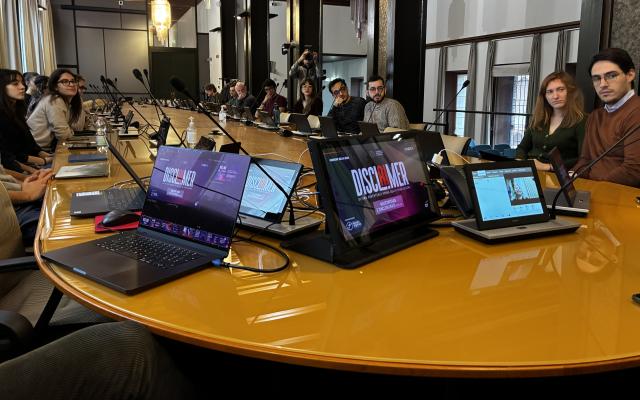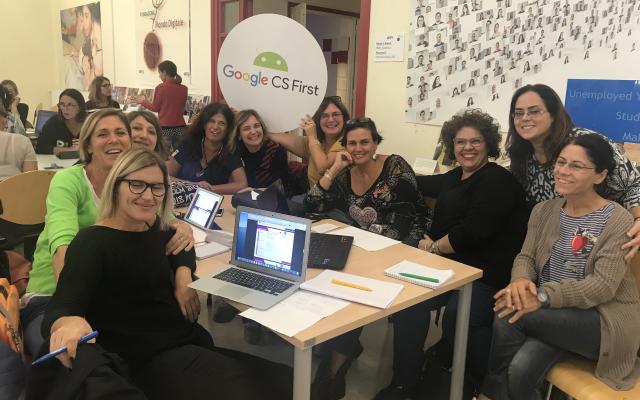CS First applications in didactic activities
Tiziana Calì teaches Italian, History, Geography and Civic Education at the Istituto comprensivo Giovanni XXIII in Paceco, in the Province of Trapani. She participated in Project CS First, attending both the teacher training sessions and involving her class actively in developing a project in the school’s computer lab. The final product was a comic book. Now, they are working on developing the project further with Scratch.
In this interview with Onelia Onorati, the professor explains how she is using the CS First Platform in class and the initial results they have achieved: students learn notions better and grasp difficult concepts more easily.
What do you think about the course?
I learnt a lot about the potential of digital tools, especially for issues such as digital citizenship and IT, coding, robotics, and the use of the Scratch programming language. I was struck by the platform’s versatility for storytelling projects. I experienced how students can use games to understand historical frameworks and place historical figures in their correct environments and interpret their lives in various ways. They were learning without even realizing it! The students were very intuitive and, following our initial inputs, they had no problems at all using the system.
How does technology improve inclusion and civic participation?
Besides simplifying learning, I noted that even students with issues and fragilities were involved. At the beginning of the course, I adopted the platform together with the support teacher and we both witnessed the great confidence with which all students worked on developing the comic book, especially thanks to the visual approach. We produced a four-slide story in English with characters exchanging information.
Do you manage to use the CS First Platform in daily didactic activities?
Teachers who still only use analogical tools are outdated. We need to adopt hybrid solutions with digital tools. It leads to a different and certainly more inclusive type of learning. This is particularly true for history. For example, in certain parts of history, chronology and the chronological organisation of events and blocks of events often represent an issue for students. The active involvement of the platform and the use of visualisation techniques allow students to grasp chronology in a much more intuitive fashion. It also works well with research on sources for epics in Italian. As teachers we need to learn how to master the platform as well as possible.




